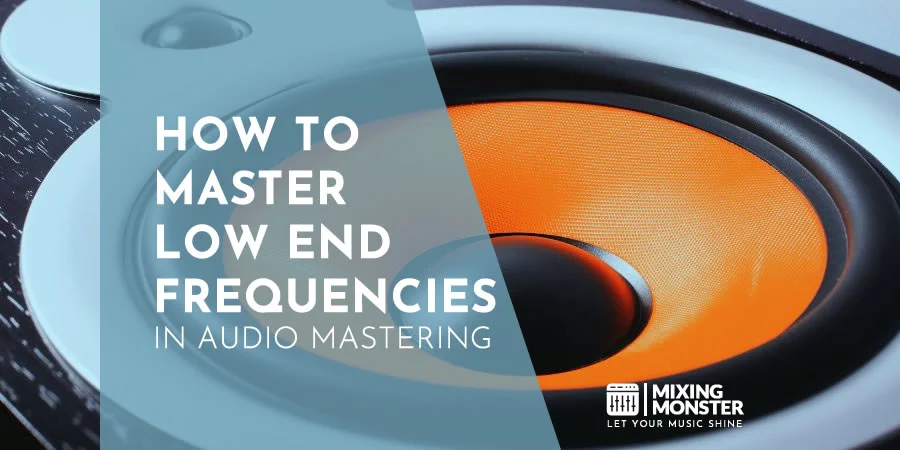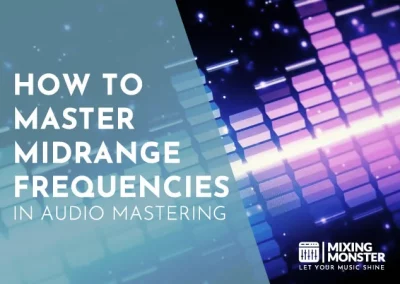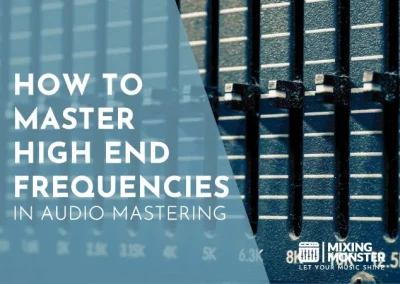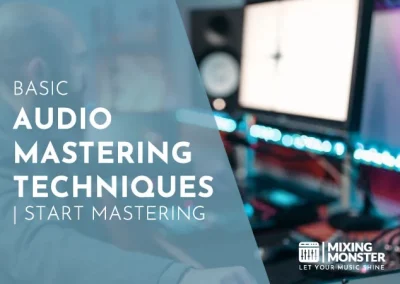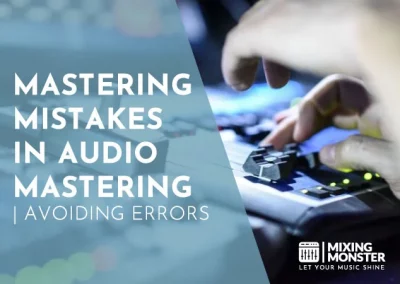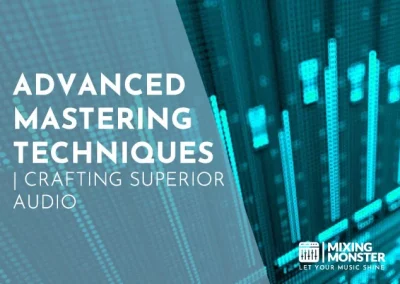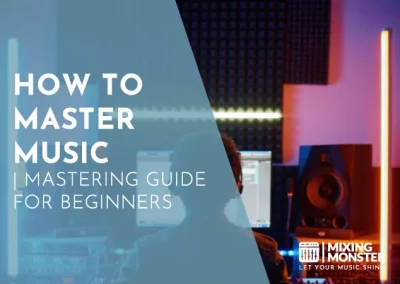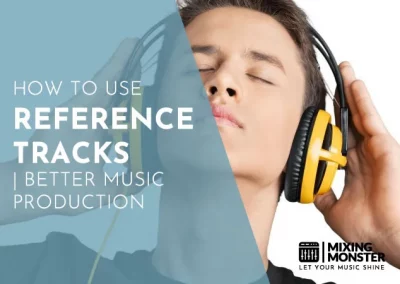Disclosure: Some of the links below are affiliate links, meaning that at no additional cost to you, we will receive a commission if you click through and make a purchase. Read our full affiliate disclosure here.
Achieving a solid low end in your mixes and masters is the hallmark of a seasoned audio professional. Mastering the low end—a task crucial for ensuring your music translates well on any system—can be daunting, but it’s integral for striking that perfect balance.
Master low end frequencies by meticulously managing the spectrum below 250 Hz to provide a foundational weight and power to music. This region encompasses the deep tones of bass guitars, kick drums, and other bass-heavy instruments. Mastering engineers use equalization, compression, and careful listening to balance these frequencies without muddying the mix.
Mastering the low end is instrumental in creating a cohesive and compelling final product. As you progress through this guide on mastering the low end, you’ll learn how to prepare your mixes for mastering and advanced strategies for fine-tuning those crucial frequencies. You’ll acquire the skills to make informed decisions during mastering, from assessing the low end to applying the best processing techniques to enhance your music.
KEY TAKEAWAYS:
- Understanding and mastering low end frequencies is crucial for creating a balanced musical mix.
- Proper mix preparation is essential to ensure clarity in the low frequencies before mastering.
- Advanced techniques and proper assessment skills are necessary for effective low end mastering.
Table Of Contents
1. Overview Of How To Master Low End Frequencies
2. Preparing The Low End Of A Mix For Mastering
3. Assessing Low End When Mastering A Track
4. Processing Techniques For Mastering The Low End
5. Advanced Strategies For Low End Mastering
6. Master The Low End Like A Pro
7. FAQ

1. Overview Of How To Master Low End Frequencies
Mastering low-end frequencies is a delicate process that shapes the energy and foundation of your music. Balancing presence and clarity in the bass region ensures your track sounds polished across various playback systems.
Low End Frequencies And Their Role In Mastering
The low end comprises the frequency range’s lower spectrum, typically 20 Hz to 200 Hz. This range includes the fundamental frequencies of many musical instruments and encompasses the area where your track’s ‘energy’ resides.
Your goal in mastering is to ensure that your track’s low-end frequencies are consistently powerful but manageable, providing a solid foundation without overpowering the mix.
The Science Behind Low Frequencies And Perception
The human ear perceives low frequencies differently than higher frequencies. Due to the long wavelength of low frequencies, they are felt as much as heard, contributing to a track’s overall ‘presence.’
When mastering, consider how these frequencies behave in different environments and on various listening devices to ensure cohesiveness. Proper frequency spectrum management is critical to guarantee that your music translates well in clubs, cars, headphones, and hi-fi systems.
Understanding and implementing these principles ensures a clear, defined, balanced low end in mastering projects.
2. Preparing The Low End Of A Mix For Mastering
Before you enter the mastering phase, ensuring that the low end of your mix is well-prepared is crucial for achieving punch and clarity. This foundation affects loudness, tonal balance, and the overall stereo image of your track.
Techniques For Achieving A Balanced Low End
Effective mixing techniques are essential to achieve a balanced low end that complements the rest of your mix. Start by applying high-pass filters to non-bass elements to remove unnecessary low frequencies contributing to muddiness. Carefully adjust the EQ on your bass tracks to enhance the desired frequencies while maintaining headroom.
Another strategy is to use sidechain compression on your bass elements, triggered by the kick drum, which allows for the necessary punch without overwhelming the mix. Mono compatibility is also important; check your mix in mono to ensure that low-end elements do not lose power or definition.
The Interplay Between Low End And Other Frequency Ranges
Understanding how the low end interacts with other frequency ranges helps achieve width and tonal balance. The low-end should not overpower the high frequencies, as this can lead to a loss of detail in the mix.
Balance can be maintained through dynamic EQ or multiband compression, enabling you to control the low end without impacting the clarity of mids and highs. It’s also valuable to manage the stereo image by keeping low frequencies centered and allowing higher frequencies to occupy the wider stereo space.
3. Assessing Low End When Mastering A Track
When mastering your track, giving special attention to the low end ensures your music feels full and powerful without compromising clarity. Careful assessment of this frequency band is crucial for achieving a clean, professional sound.
Tools And Techniques For Analyzing Low End In Mastering
It would be best to have precise tools and techniques to analyze the low end of your mastering process. Spectrum analyzers visually represent the frequency spectrum, allowing you to pinpoint where the low frequencies sit in the mix. For the best results, look for a spectrum analyzer that offers high resolution in the low end.
Another invaluable tool is the bassroom plugin, designed specifically for fine-tuning the bass frequencies. It can guide you with genre-specific EQ settings to achieve a balanced low end. Metering tools show you a waveform view and give insights into the dynamics of your bass frequencies, ensuring they’re well-defined and not peaking excessively.
Tools to Consider:
-
- Spectrum analyzers
- Bassroom plugin
- Advanced metering plugins
By combining these tools, you can accurately assess the low end to make decisions to bring out the best in your track.
How To Identify Issues With Low End Frequencies
Identifying and fixing low-end frequency issues is critical to a clean mix. First, listen for a muddy sound, often indicating an overload in the low-mid frequencies.
If this area is too prominent, use an EQ to dial back the sound. Additionally, check for any unwanted rumble or bass frequencies that can mask other mix elements. High-pass filters are effective for removing such unwanted frequencies.
Common Low End Issues:
-
- Muddiness in the low-mid range
- Excess rumble or subs
- Clashing bass elements
Remember, your ears are the ultimate judges, so take regular breaks and assess your track on different playback systems to ensure your low end translates well in real-world listening environments.
4. Processing Techniques For Mastering The Low End
Mastering the low end of your mixes involves precise processing techniques that enhance the impact and clarity of bass frequencies. It is essential to achieve a balance that works across all playback systems.
Equalization And How To Apply It To Low Frequencies In Mastering
When mastering, equalization (EQ) is a pivotal tool for shaping the low end. Your task is to cut or boost frequencies to achieve a well-defined low end.
For example, a gentle cut around the 20-30 Hz area can reduce rumble and provide more headroom, while a subtle boost around 60-100 Hz can bring warmth to your kick drum and bass notes. Utilize high-pass filters to clear up any unnecessary low-frequency content that may muddy the mix.
Compression And Other Dynamics Processing In Mastering
Compression is equally crucial in mastering the low end. When applying compression, look for a setting that ensures consistency across the low frequencies without squashing the dynamics.
A multiband compressor can be handy, allowing you to reduce gain to lower bands and control the bass notes. Aim for a compressor setting that glues the low end together while retaining punch.
Best Practices When Mastering The Low End
To master the low end effectively, there are several best practices to keep in mind:
- Monitor Accurately:
Ensure your monitoring system accurately reproduces low-end frequencies. - Be Conservative With Boosts:
Excessive boosting can lead to a boomy mix; instead, focus on subtle enhancements. - Note Phase Issues:
Always check for and correct any phase discrepancies that might weaken the low-end impact. - Use Harmonic Saturation Sparingly:
A touch of saturation can warm up bass frequencies but avoid over-processing. - Reference Tracks:
Compare your low end to tracks known for their well-mastered low frequencies.
Below is a table of suitable EQ and compressor settings and moves when mastering low end frequencies:
| Hz | EQ Move | Compressor Threshold | Compressor Ratio | Attack Time (ms) | Release Time (ms) |
|---|---|---|---|---|---|
| 20-30 | Cut to reduce rumble | -18 dB | 2:1 | 30 | 100 |
| 60-100 | Boost for warmth | -10 dB | 1.5:1 | 10 | 200 |
| 100-200 | Tame muddiness with cuts | -15 dB | 3:1 | 20 | 150 |

5. Advanced Strategies For Low End Mastering
Side Chain And Multiband Compression
Sidechain Compression offers control over your bass and kick drum dynamics. By setting up a sidechain from the kick to the bass, the bass will be momentarily compressed when the kick hits.
This creates space for the kick, adding definition and rhythm to your track. Use a compressor with sidechain capabilities and finely tune the threshold, attack, and release settings until you achieve the desired groove.
With multiband compression, you segment your low end into frequency bands, enabling independent compression of each area. This is especially useful when you compress the bass without affecting the
sub-bass or vice versa. A multiband compressor should be applied subtly to prevent phase issues or the loss of natural dynamics. Select a frequency range that targets the problem area, adjust the gain and ratio settings, and use the limiter judiciously to ensure you’re not overcompressing.
Enhancing The Low End With Harmonic Distortion And Saturation
Harmonic distortion allows adding warmth and presence to your bass without muddying the mix. Applying distortion judiciously across the low frequencies can help your bass cut through even on smaller speakers. Use distortion to enhance the upper harmonics, making the bass more perceivable.
Saturation is your tool for adding richness and texture. It can increase perceived loudness without peaking the meters on the low end. Be careful with the amount; a little goes a long way.
Insert saturation on your bass channel or group bus, and increase the drive until you notice a fuller sound. This can also benefit the vocals or lead vocals, ensuring they sit well in the mix without competing with the bass.
Insert a limiter at the end of the chain to catch any peaks and ensure your low end remains consistent in volume. Remember, tools like Waves RBass can be indispensable for adding weight to your bass without unnecessary gain.
6. Master The Low End Like A Pro
Mastering the low end in your mixes requires strategic techniques and a well-tuned ear. The bass frequencies are fundamental to the energy and balance of your tracks. To truly excel, you must focus on reference tracks and embrace continuous learning and experimentation throughout your audio mastering process.
Key Takeaways For Mastering Low End Frequencies
- Reference Tracks:
Utilize professional mixes as benchmarks. Listen to how the low end behaves and try to mimic that balance in your mix. - Continuous Learning:
Stay updated with the latest mastering techniques and tools. Audio production is an ever-evolving field; staying informed is vital to mastering any element, including the low end. - Experimentation:
Don’t hesitate to experiment with various mixing methods. Sometimes, the best results come from the least conventional techniques. - Mixing Techniques:
Apply equalization and compression thoughtfully. Sculpt the low frequencies to complement the rest of the mix without overpowering them. - Subtractive EQ:
Cut frequencies to clean up the mix rather than boosting them. This helps in achieving a clear and powerful low end. - Harmonic Enhancement:
Consider subtle harmonic distortion to make the bass frequencies more perceptible on smaller speakers. - Sidechain Compression:
Use sidechain compression to allow the kick to punch through by temporarily dipping the bass levels. - Monitoring Systems:
Test your mix on various systems to ensure the low end consistency across different playback devices. - Headroom:
Leave enough headroom in your mix for the mastering stage. This ensures the low end doesn’t cause issues during the final enhancements. - Stereo Imaging:
Keep the low end centered. Stereo spread in lower frequencies can cause muddiness and phase issues.
Happy low end mastering!
7. FAQ
1) For clarity, how do you control low frequencies in a mix?
To control low frequencies in a mix for clarity, use high-pass filters to remove unnecessary bass content from non-bass instruments. Employ sidechain compression to allow the kick to cut through the mix without muddying other elements.
2) What techniques ensure a powerful low-end in hip-hop production?
In hip-hop production, layering different bass sounds and ensuring they are in phase strengthens the low end. Additionally, using saturation subtly can add harmonics to the bass, making it more present on smaller speakers.
3) What are the best practices for EQing bass in mastering?
When EQing bass is mastered, maintain balance by applying gentle boosts or cuts, and always compare the processed signal with the original. Use tools like spectrum analyzers to identify and address problematic frequency areas.
4) How do you achieve a balanced low end in guitar-heavy tracks?
Carve out space for each instrument using frequency-specific panning and EQ to achieve a balanced low end in guitar-heavy tracks. Ensure the bass guitar and kick drum do not compete for the same frequency range.
5) What is the ideal peak level for low frequencies during mastering?
The ideal peak level for low frequencies during mastering should not exceed 0 dBFS. However, average levels around -6 dBFS for digital releases provide headroom for dynamic content.
6) What are common mistakes to avoid when mastering the low end?
Avoid over-boosting the low end, which can lead to a muddy mix. Be cautious of cutting too much, which can make it sound thin. Ensure you listen on multiple systems to gauge the bass response accurately.

